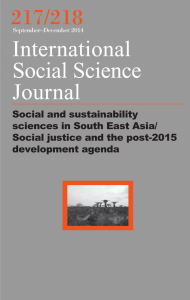$221,190 Dollar Baby

U.S. department of agriculture has released a report about expected expenditures for raising a child from birth to age 17 in U.S. . Several news sites refer this news as “quarter-million dollar baby” – about a quarter of a million dollar is spent for a child born in 2008 through birth to age 17 (the expenditures vary across family income, region, or household structure- See the report ). The amount of money has been increasing in since 1960 when the department start to release the report. It should be noted that direct comparison is impossible because methodology has changed over this period, roughly speaking, compared to $183,509 parents expected to spend for raising the baby born in 1960 through age 17, $221,190 is expected to spent for a baby born in 2008 (both in 2008 dollars).
There are many possible reasons for the change. 1.Prices of goods for raising a child have increased. 2. Prices of goods for raising a child have not changed, however, modern parents buy higher quality goods for their children. 3. Modern parents use market frequently more than parents in 1960.
Probable reasons are 2, 3, and their mixtures. According to Farell and Shields (2007) who study the expenditure behavior for British children, the goods for children are “normal” goods and several expenditures like for clothes or leisure are “luxury” items. (if the demand for some good increases with income rises, the good is called “normal goods”, and the rate of increase on the demand is faster than the rate of increase on income, the good is called “luxury” goods.) The results of Farell and Shields (2007) for British children seems to be consistent with 2, modern parents with higher income buy higher quality goods than old parents.
Actually, largest change is seen in child care & education. Child care & education amounts to 16% of total expenses in 2008, while only 2% in 1960. According to Michaelopulos and Robins (2000) who analyze the relationship among child-care subsidies, child-care prices, and employment of mother who have a child under 5 in U.S and Canada, child-care prices, child-care subsidies, and wages significantly affect employment and child-care decisions in both country. Because care for pre-school children, especially for infants, has been expensive through the market, care for them depends typically on the mother, or relatives (see Brandon (2000)).
If expenditure on education for children increases, their productivity will increase (quality will rise), however, as expenditure for children increases, fertility rate may decrease (quantity may decreases.) (See the discussion in Barro and Becker in Econometrica (1989).)
 Read ‘Children as consumers: investigating child diary expenditure data’ by Lisa Farrell and Michael A. Shields
Read ‘Children as consumers: investigating child diary expenditure data’ by Lisa Farrell and Michael A. Shields







This is a sobering post. In some ways it is shocking that the costs have not changed very much over the nearly 60 years of tracking the costs of raising a child. Considering the social changes (e.g. both parents working, convenience foods, child care use, capitalist expansion, etc…) in the family across this amount of time, it seems that the costs to raise a child would reflect the impact more strongly.
This is an interesting post.
Keri